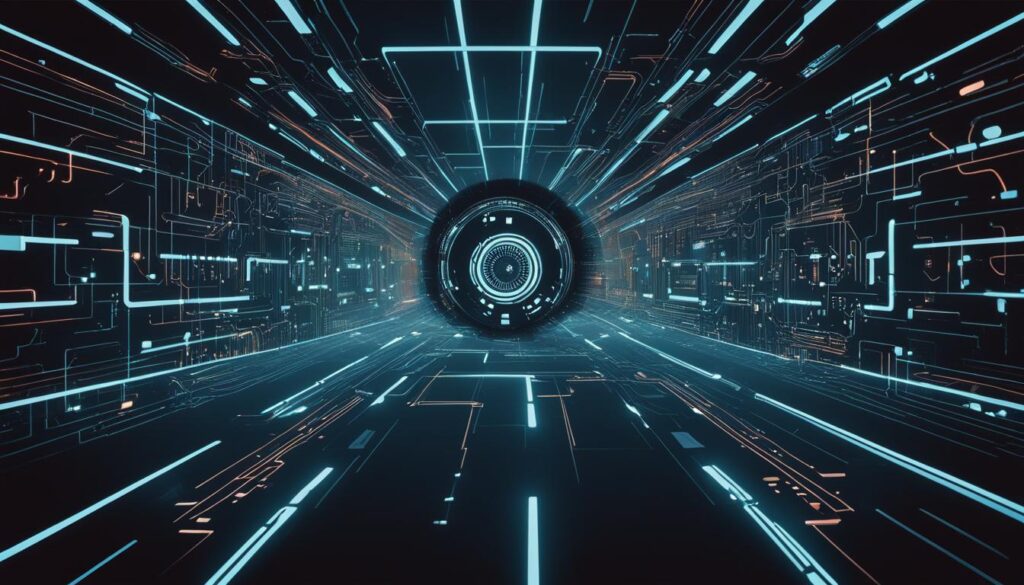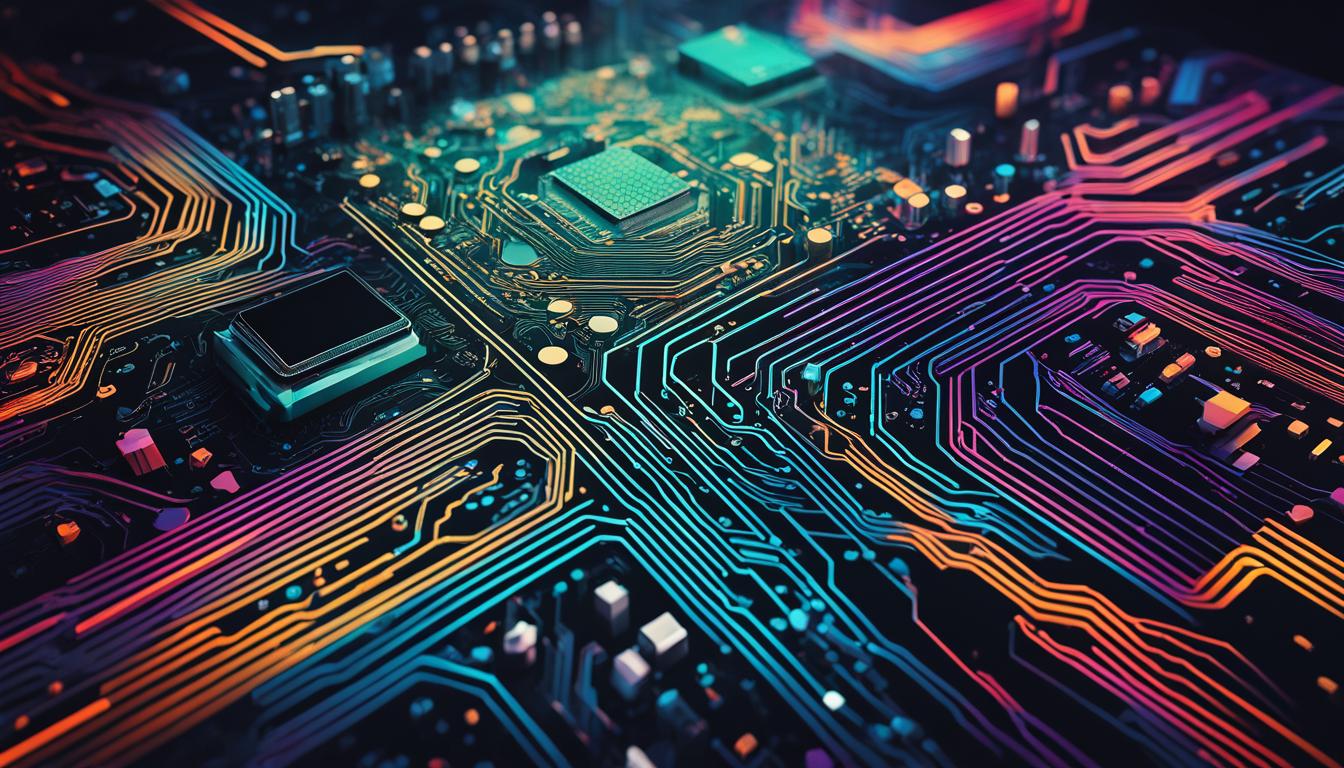Welcome to the world of artificial intelligence (AI) detection tools. As AI technology continues to advance, it becomes increasingly important to differentiate between AI-generated content and human-made content. AI detectors play a vital role in this process, ensuring content integrity and authenticity. But what exactly is a detector in artificial intelligence? Let’s dive in.
An AI detector is a tool specifically designed to assess the likelihood of AI-generated content. These detectors undergo extensive data training to accurately identify and understand AI-generated text. By rigorously testing their models, they ensure high detection accuracy, allowing users to confidently distinguish between human-made and AI-generated content.
One significant AI detection tool in the market is Winston AI. During testing, Winston AI achieved an impressive 99.6% accuracy rate in detecting AI-generated content. This level of accuracy is possible due to their commitment to staying ahead of advancements in generative AI models. By constantly retraining their models, Winston AI ensures that their detection capabilities evolve alongside the technology.
Contents
Key Takeaways:
- AI detectors play a crucial role in maintaining content integrity in the age of AI-generated content.
- These tools accurately assess the likelihood of AI-generated content versus human-made content.
- The effectiveness of an AI detector depends on extensive data training and rigorous testing.
- Winston AI scored 99.6% accuracy in detecting AI-generated content during testing.
- Achieving accurate and reliable AI detection requires keeping pace with advances in AI technology.
Why are AI detection tools important?
AI detection tools play a crucial role in maintaining content integrity, especially in the face of AI writing tools like ChatGPT. With the rise of AI-generated content, it is essential to assess the authenticity and origin of the text we encounter. AI detection tools help us differentiate between AI-generated content and human-made content, ensuring accurate detection and assessment.
Traditionally, plagiarism detection software focused on identifying copied content. However, AI detection tools have become increasingly vital in the digital landscape. They help us determine if the content we encounter is genuinely created by the author or if it is AI-generated.
Teachers, publishers, and researchers heavily rely on the originality and integrity of the content they consume. AI detection tools provide them with the ability to verify the authenticity of the text, protecting against potential plagiarism and ensuring content integrity.
By utilizing AI detection tools, we can maintain the integrity of our work, protect against plagiarism, and ensure that the content we encounter is created by human authors, not AI algorithms.
Let’s take a closer look at how AI detection tools assess the authenticity of AI-generated content:
Assessing the Authenticity of AI-Generated Content
AI-generated content can pose challenges when it comes to maintaining content integrity. It is original content but not created by human authors. AI detection tools provide a solution by assessing the likelihood of AI-generated content versus human-made content.
AI detection tools act as AI writing detectors, allowing us to distinguish between human and AI-generated text. They analyze the language patterns, style, and other characteristics to detect the presence of AI algorithms in the content.
These tools take into account the advancements in AI writing technology and adapt their detection algorithms accordingly. By staying up-to-date with the latest developments in AI writing, AI detection tools can efficiently identify AI-generated content and help us make informed decisions about the integrity of the content.
AI detection tools are essential for maintaining content integrity and ensuring that the content we encounter is genuine. They empower us to make informed decisions about the authenticity of AI-generated content, protecting against plagiarism and preserving the integrity of our work.
What factors contribute to the effectiveness of an AI detector?
The effectiveness of an AI detector relies on various critical factors that enhance its ability to accurately identify and assess AI-generated content. These factors include:
- Data Training: Extensive data training is essential for an AI detector to successfully distinguish AI-generated content from human-made content. By training the detector on a large dataset that encompasses a wide range of AI-generated samples, it develops the necessary knowledge and understanding to make accurate assessments.
- Testing: Rigorous testing is a crucial aspect of ensuring the effectiveness of an AI detector. Through comprehensive testing processes, the detector’s limits are pushed, and its capability to detect AI-generated content is thoroughly assessed. By subjecting the detector to various scenarios and examples, its accuracy and reliability can be evaluated.
- Clear Assessments: Providing clear and comprehensive assessments is key to aiding users in determining whether their content is AI-generated or not. This includes presenting overall scores and AI prediction maps, allowing users to visualize and understand the extent of AI influence in their content. Clear assessments enable informed decision-making and facilitate transparency in content creation processes.
An effective AI detector combines these factors to ensure accurate detection and assessment of AI-generated content, ultimately contributing to maintaining content integrity and authenticity.

| Key Features of Winston AI as an AI Detector | Benefits |
|---|---|
| Extensive Testing | – Ensures the reliability and accuracy of AI detection. |
| Data Training | – Equips Winston AI models to identify and understand AI-generated content effectively. |
| Clear Assessments | – Provides users with overall scores and AI prediction maps for easy evaluation. |
| Adaptability | – Constantly updated to recognize and adapt to new advancements in AI. |
With its remarkable accuracy and commitment to improvement, Winston AI stands as a trustworthy AI detector, enabling users to maintain the integrity of their content and confidently navigate the landscape of AI-generated text.
Overview of AI Content Detectors
AI content detectors play a vital role in today’s digital landscape, leveraging powerful machine learning algorithms to automatically analyze and filter digital content. These AI-powered guardians have the potential to revolutionize content moderation processes, ensuring the integrity and safety of online platforms. However, the accuracy of AI detectors remains a topic of debate, as they grapple with the nuanced nature of context and content.
While AI detectors excel at identifying certain types of content, such as hate speech or nudity, their effectiveness in handling context and nuanced content is often limited. False positives or negatives can occur, leading to unintended consequences and potentially impacting the user experience. This emphasizes the importance of human supervision and periodic evaluation to ensure the accuracy of AI detectors in discerning truth from deception.
“AI content detectors serve as powerful guardians, but they are not infallible. Human oversight and critical evaluation are essential to ensure accuracy and mitigate unintended consequences.”
By understanding the limitations and challenges faced by AI content detectors, we can work towards developing more sophisticated and context-aware algorithms. This would enable AI detectors to navigate the complexities of nuanced content with greater accuracy, improving content moderation processes and ensuring a safer online environment for all.

Effective Content Moderation – Striking the Right Balance
- Utilize a combination of AI content detectors and human moderators for comprehensive evaluation.
- Continuously update and refine AI detection algorithms to handle emerging content risks.
- Implement user-friendly reporting mechanisms empowering users to flag inappropriate content.
- Establish clear guidelines and policies to maintain transparency and fairness in content moderation.
The Future of AI Content Moderation
The advancement of AI content detectors holds great promise but requires a continuous effort to address their limitations. Ongoing research and development, coupled with human supervision and evaluation, play a crucial role in enhancing their accuracy and effectiveness. By striking the right balance between AI and human involvement, we can create a digital ecosystem that fosters meaningful and responsible content creation while tackling emerging challenges.
Conclusion
In the ever-expanding landscape of AI-generated text, the role of AI writing detection tools is paramount in ensuring the authenticity and origins of content. As AI models advance, AI detection tools must keep pace by continually updating and retraining their models to adapt to new developments. Notable examples of such powerful detection tools include SEO.ai’s AI Content Writing Detector and OpenAI’s Classifier Tool.
Looking to the future, the path of AI writing and content detection remains uncertain. However, ongoing advancements in technology and tools will undoubtedly shape this landscape. To effectively evaluate the authenticity of content, it is crucial to combine intuition with reliable detection tools.
As content creators and consumers, making informed decisions relies on the accuracy and effectiveness of AI detection tools. By utilizing these tools, we can navigate the evolving world of AI-generated text and ensure the integrity of the content we encounter.
FAQ
What is an AI detector?
An AI detector is a tool that assesses the likelihood of AI-generated content versus human-made content, helping to maintain content integrity in the age of generative AI tools like ChatGPT.
Why are AI detection tools important?
AI detection tools are important because they help maintain content integrity by assessing the authenticity and origins of AI-generated content, ensuring accurate detection and assessment.
What factors contribute to the effectiveness of an AI detector?
Factors that contribute to the effectiveness of an AI detector include extensive data training, rigorous testing, and providing clear assessments to accurately identify and understand AI-generated content.
How does Winston AI demonstrate its capabilities as an AI detector?
Winston AI demonstrates its capabilities as an AI detector through extensive testing and high accuracy rates. During testing, Winston AI scored 99.6% in detecting AI-generated content, showcasing its effectiveness in identifying and assessing AI-generated text.
What are AI content detectors?
AI content detectors are tools that use machine learning algorithms to automatically analyze and filter digital content. They play a crucial role in content moderation processes but can struggle with context and nuanced content.
What is the future of AI writing and content detection?
The future of AI writing and content detection is uncertain, but ongoing advancements in technology and tools will continue to shape the landscape. Combining intuition with detection tools will be essential to evaluate the authenticity of content and make informed decisions.




